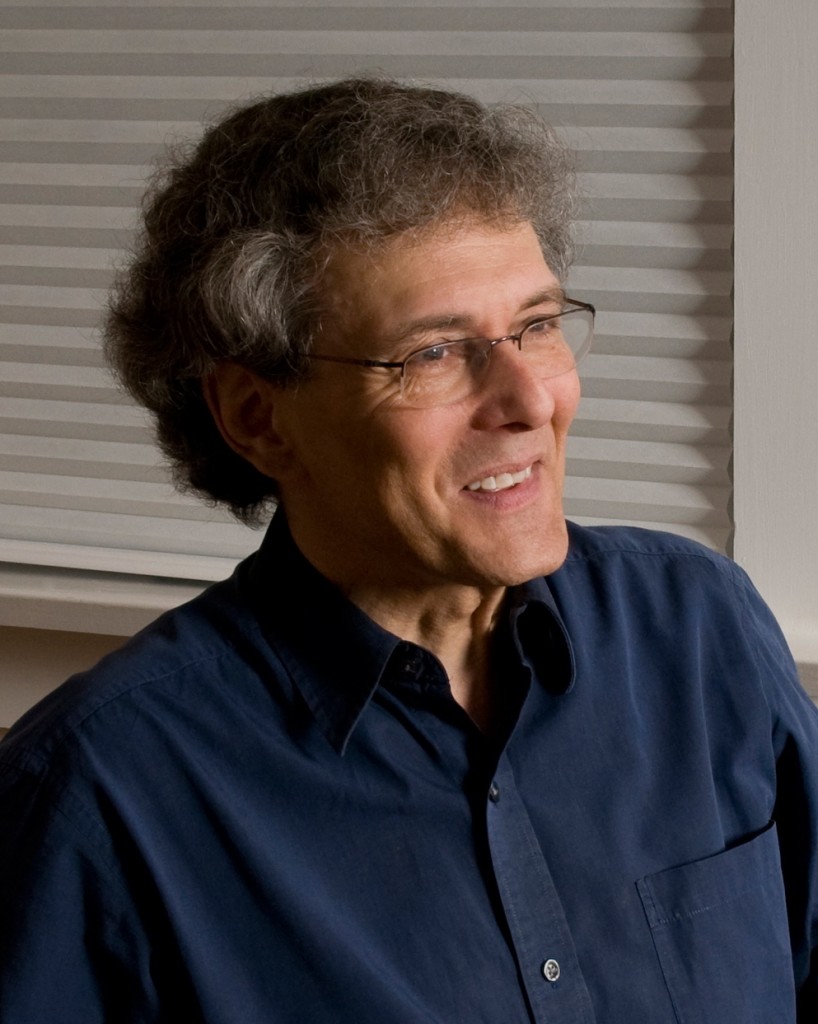Boston Baroque mixes past and present delightfully in New Directions series

Music director Martin Pearlman performed harpsichord works by Couperin and Ligeti in Boston Baroque's New Directions series Saturday night at the Longy School.
Boston Baroque explored four centuries of music in the second program of its New Directions chamber music series. Works by little-known composers, rarities by more canonical names, and 20th-century compositions for period instruments provided an eclectic and engaging mix Saturday night in Pickman Hall at the Longy School of Music.
Johann Christoph Bach’s Ach, dass ich Wasser g’nug hätte, a fine piece from a lesser-known member of the Bach family, was the most moving work of the evening. Katherine Growdon’s rich mezzo-soprano complemented the small ensemble of four viols, violin, and organ continuo in this vocal concerto. In the final refrain, Sarah Darling’s attack and phrasing on the violin added greater depth to an emotionally charged and sweetly chromatic work.
Violists Laura Jeppesen, Emily Walhout, and Jane Hershey offered finely tuned and well-balanced renderings of Fantasias by Thomas Lupo and Orlando Gibbons, works intended for the simple enjoyment of private music making. Sara Freiberg joined the consort for Henry Purcell’s Fantasia a 4, a piece that, compared with the other two, made the most out of the multi-sectional form, giving the players an opportunity to maneuver between canonical passages and slow, more homophonic ones.
It’s well known that Handel borrowed and reused material from his vast corpus of music. And the original versions of arias and choruses are usually historical curiosities suited for scholarly interest. But Boston Baroque’s rendering of Handel vocal duets were charming in their own right.
Growdon joined soprano Brenna Wells in Se tu non lasci amore, where the voices melded with the continuo, played by Freiberg (cello) and Peter Sykes (harpsichord). Teresa Wakim’s bold soprano shined in the composer’s Meine Seele hört im Sehen, where she was joined by violinist Darling, who played a delicate obbligato. Wells and Wakim teamed up for a spirited rendering of Quel fior che all’ alba ride, a piece that Handel reworked into His Yoke is Easy and He Shall Purify in Messiah.
Aldo Abreu, a Boston Baroque regular, demonstrated excellent technique and controlled phrasing on unaccompanied recorder in a short Fantasia by Pieter de Vois and five Petit Branle—dances with variations—by Jacob van Noort.
After intermission, Abreu returned to the stage, joining Freiberg and music director Martin Pearlman (harpsichord) in a transcription of Arcangelo Corelli’s La Folia for solo recorder. Intonation problems plagued Abreu’s performance—one of the middle variations contained sustained notes that wavered in and out of pitch—but he commanded his instrument in the more technical variations.
Shifting styles and historical eras, Abreu followed with a dramatic interpretation of Luciano Berio’s avant-garde Gesti, a piece that explores the unusual timbres of the recorder. The audience did not quite know how to react and a few giggles and murmurs accompanied Abreu’s playing, which involved fingering ghost notes and even singing into the instrument. To quell disbelief, Abreu showed the audience the score following his energetic performance.
Pearlman took to the harpsichord for an equally unusual pairing: Francois Couperin’s Les barricades mistérieuse and György Ligeti’s Continuum. Both pieces, Pearlman noted, are studies in harpsichord sonority. Les barricades, a work set to perpetual rhythmic motion, almost possess a minimalist quality, and Pearlman played it with fine control of the phrasing.
Continuum, comprising oscillating and repetitive note patterns that encompass the full keyboard, made less of an impression. Though Pearlman had control of the technique, his rather cautious interpretation produced a reserved performance.
To close the concert, the performers returned to their roots with another Handel duet, Nò, di voi non vo’ fidarmi, which the composer also reworked into the Messiah chorus For Unto Us a Child is Born. Here, Wells and Wakim seemed to struggle for the right balance during the opening, but, by the end, they achieved a quality blend, bringing a strong conclusion to the piece and a delightful evening of music.
Boston Baroque’s New Directions series continues February 3, 2013 with sonatas by Corelli, Couperin, Castello, and Elliot Carter. bostonbaroque.org
Posted in Performances